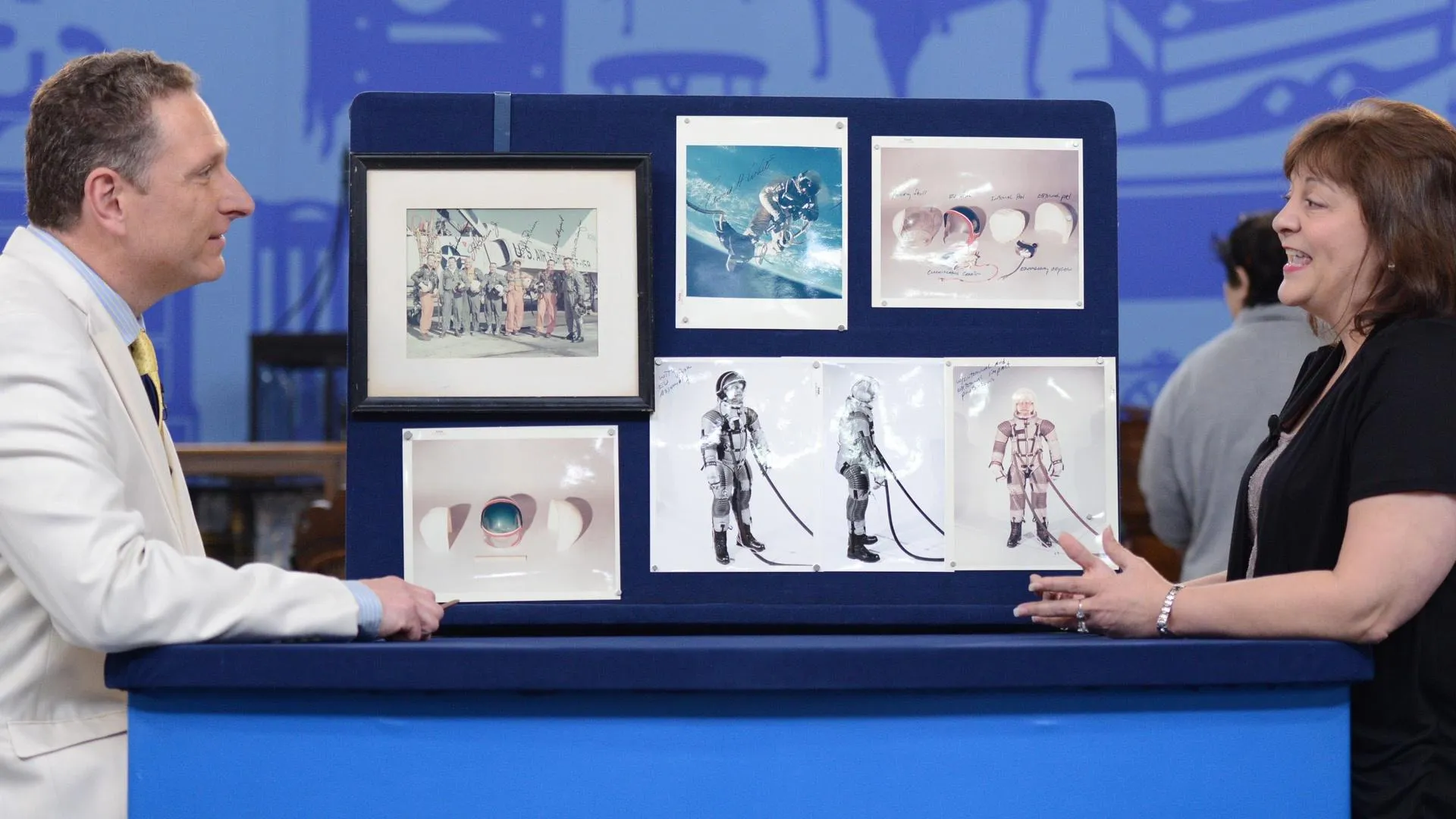GUEST: I bought it about five years ago. It took me two years to get it because I made the mistake of saying, "I'll come back tomorrow," and it was gone, but I bugged the guy and finally two years later, I got it, so I've had it about five years.
APPRAISER: And you bought it and you put it in this frame and you hang it and you really enjoy it, right?
GUEST: Every day.
APPRAISER: The map is by a man named Harrison Godwin, and it was done about 1925, and you can see the date up here: "San Francisco, 1925." Now, Harrison Godwin was an illustrator who was born in 1899 in New Jersey, and he moved out to California in the 1920s. And when he got here, he started doing maps like this, and these are called pictorial maps, and they were basically tourist maps, and they have a wonderful combination: their appeal to people who like maps, which I love maps and obviously you like maps, but they also have all these great illustrations. And this was a very popular thing in the 1920s, and they did all sorts of regional maps in different cities around the United States, and Harrison Godwin did a number with a California theme. He did California, he did one of the Panama Canal, he did a number of San Francisco, and this is his larger one of San Francisco. They have all these little vignettes that have information. Now, you've got one that you think is kind of interesting. Can you tell me about that?
GUEST: Right here there's a camel, and it kind of indicates that whole area was sand dunes for years and years.
APPRAISER: Right, it's factual, it's got information, but it's humorous, and he's got lots of other wonderful illustrations. I mean, down here, just to look at a few of them, here you have the area where they had the butcher shops and the slaughterhouses, and you can see, and they take that theme up here. You have the city and county hospital with a doctor holding a cleaver. You know, I mean, somewhat factual. You also have other wonderful scenes, like here's the firehouse with a guy jumping out of a building, and then right next to it, you have the dog pound, and then if we move over here, we have a high school with a student getting spanked, and right above that, Ewing Field, which is a semi-pro field where they're having a fight rather than playing a ball game.
GUEST: Of course.
APPRAISER: And this is filled with these little vignettes that have a historical basis but are a lot of fun.
GUEST: Every day, I find something new.
APPRAISER: Now, these are very popular and in fact, they make similar things today. For a long time in the market, because they did a fair number of these, people dismissed them. Now, how much did you pay for this?
GUEST: About $140.
APPRAISER: $140, and this was how long ago?
GUEST: About five years ago.
APPRAISER: Well, five to ten years ago, that's an appropriate price for them. So the values have gone up and up and up. What did you think this might be worth now?
GUEST: $200, $250, maybe.
APPRAISER: Right, okay, well, it's actually worth quite a bit more. If this was in a retail shop, you'd probably see about $1,800 on it. One recently went at auction for over $2,000.
GUEST: Wow! Well, you're my new best friend. (both laughing) It's amazing.



